| Photojournal
- 20 February
2005
Turning
stones on Sunday
|
I had set my alarm
to wake me up around 9am on the 20th; I had generally been sleeping
past noon and missing out on most of whatever sunlight the days
had been offering. I dragged myself out of bed, hit the shower,
and was on the road by around 9:30. I decided to head out to the
Tsawassen ferry jetty, a long jetty out into a bay with the nice
feature of a public road right down the middle and a parking lot
at the end. On Saturday, people had spotted a Rock Sandpiper hanging
out with the local Black Turnstones out at the end of the jetty.
I made the Rock my target bird of the day.
I took Ladner Trunk
Road for part of my route, and somewhere along it I saw a tree
at the side of the road with a sextet of Bald Eagles in it. I
pulled over across from the tree and took some photos.
|
|
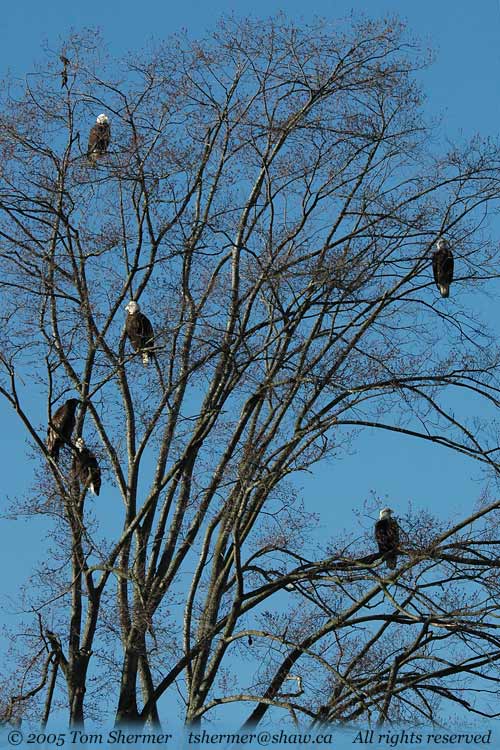 |
|
I didn't even bother
to get out of my car, though. I just took a few quick shots and
then continued on.
I reached the ferry
terminal at about 10:15 and bought one hour of parking. I then
took my camera and clambered over the roadside barrier to the
south side of the jetty, near Berth One. Berth One is being rebuilt,
and perhaps because it's not in use by the ferries, it's a good
place to find lots of birds.
There were a lot of
birds around today. It was a high-ish tide and the shoreline was
relatively empty, but the water held lots of goodies. Goodies
like the following Red-necked Grebe.
|
|
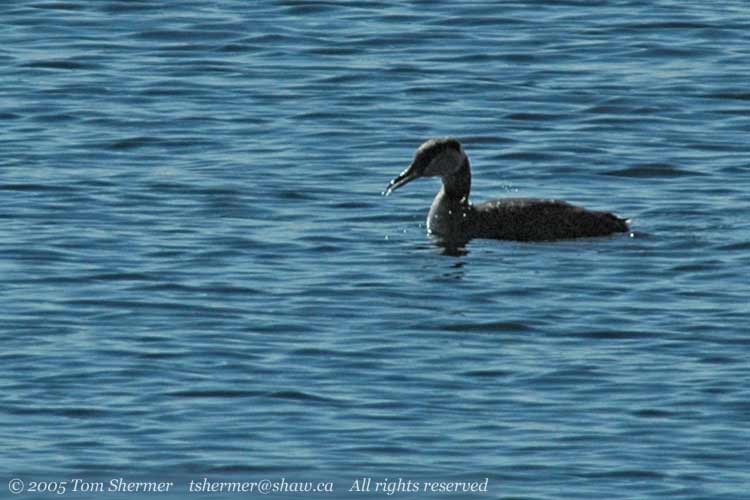 |
| Hanging
out near the berth was a Pelagic Cormorant. It's a pleasure to see
a Pelagic every now and then, as opposed to the more locally-abundant
Double-crested Cormorants. |
|
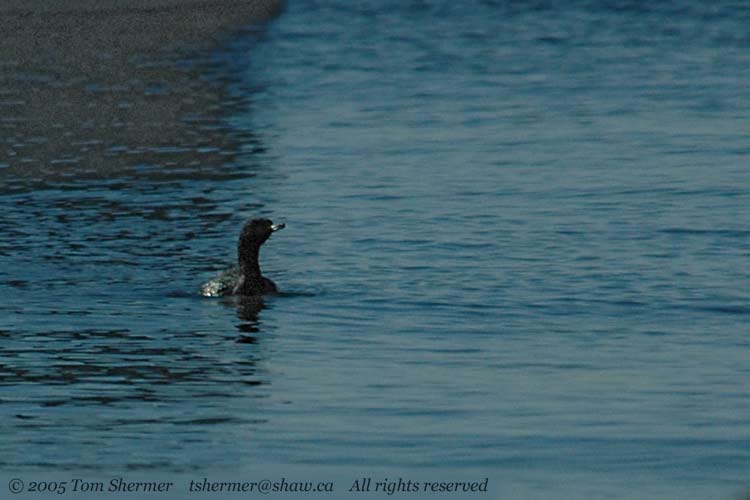 |
|
Then, of course, there
were the local turnstones. They were hanging out on all of the
wooden structures supporting the berth; it's their usual place
when the tide is high. At low tide, or maybe just when they're
hungry, they walk along the shoreline. Anyhow, I hadn't checked
the tides and had expected to find them along the shoreline, not
at the berth. This was bad news for my hopes of finding the Rock
Sandpiper.
Making the best of
the situation, I climbed over the large pilings and sat on a big
rock about as close to the turnstones as I could get without jumping
in the water. The bright sunlight made the black-and-white birds
a tough subject, but I managed to get several shots that I thought
were fairly interesting. Here's one of two turnstones on a beam.
|
|
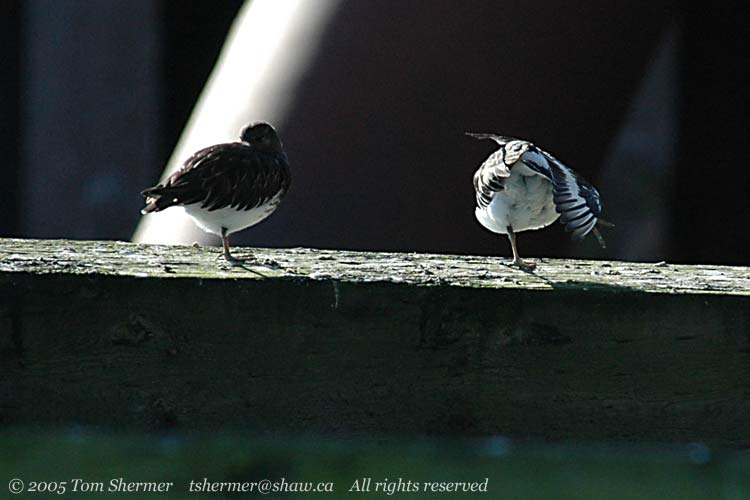 |
| A little
later I caught this shot of a Turnstone talking with one of his
pals around the corner. |
|
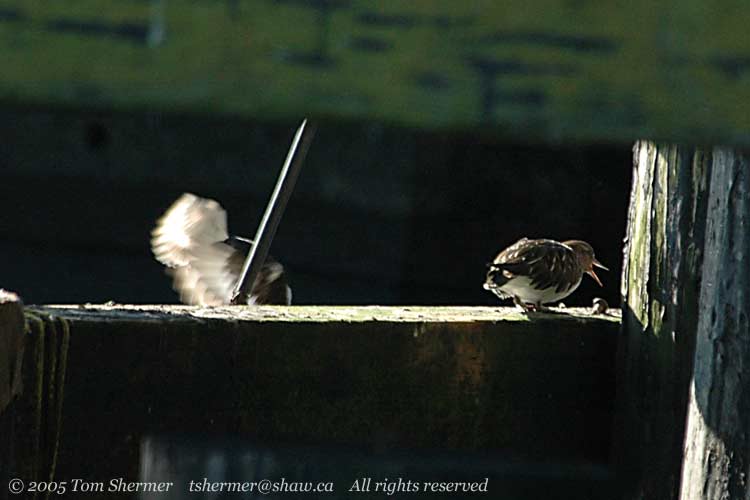 |
| From where
I was seated, there was a place where I could see through to the
other side of the berth. That's where I found this Horned Grebe;
the dark things framing the image are the berth supports. |
|
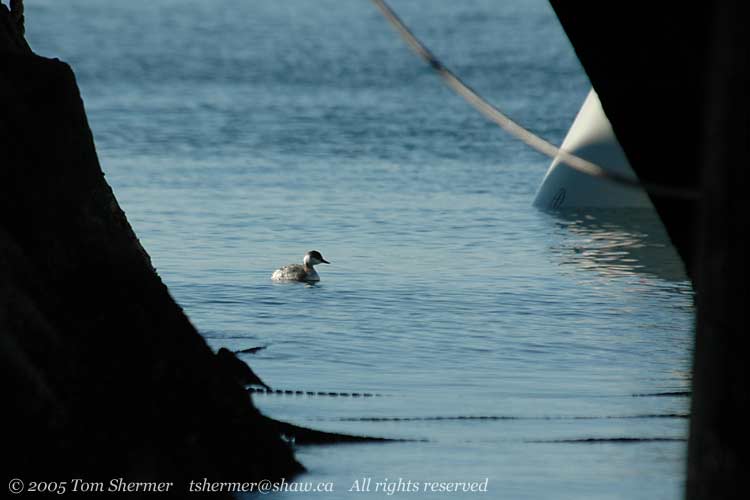 |
|
As I was shooting,
another fellow came over with his binoculars and we had a little
conversation. The fellow was 30ish and had a light British accent
of some sort, but I can't seem to remember his name. Anyhow, his
bins (or his eyes) were better than mine, and he looked
into that darkness that was the left-hand support on the previous
picture, and said that there was a Surfbird down there.
Surfbirds are medium-sized
shorebirds, slightly longer but significantly bulkier-looking
than a turnstone. I had a look through my binoculars, and I could
see birds and motion down there in the dark, but I couldn't really
see any significant differences in the birds. But I trusted him
and aimed my camera at the dark, hoping it would pick up what
I couldn't see.
The interesting thing
about this is that it worked, sort of. The following photo shows
a Black Turnstone in the middle of the picture, and a Surfbird
on the right. I ended up focussed a little in front of the birds
(which I couldn't see at all in my camera viewfinder) and got
a pretty blurry Surfbird, but it's still recognizable. The water,
as expected, turned out way overexposed, but that was the only
way to get detail out of that shadowy area.
|
|
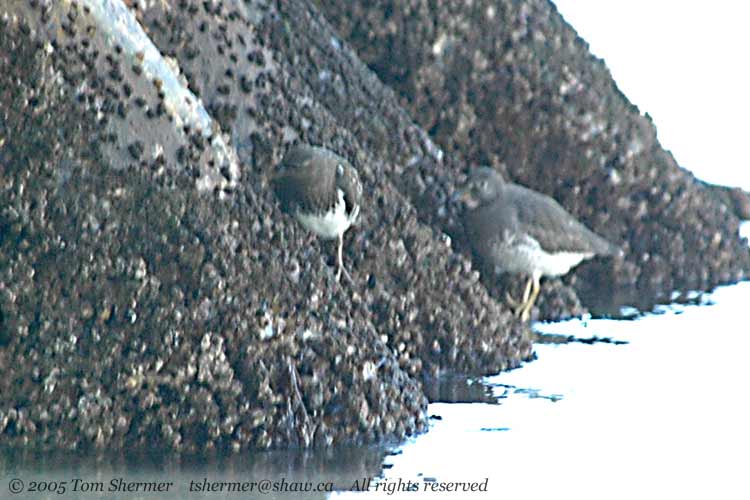 |
|
Anyhow, a Surfbird
isn't a Rock Sandpiper, but it was still a pretty good find.
After that, my fellow
birder left, and I took a few photos of the berth supports themselves.
Their complex construction and weathered wood had a nice feel
to it.
|
|
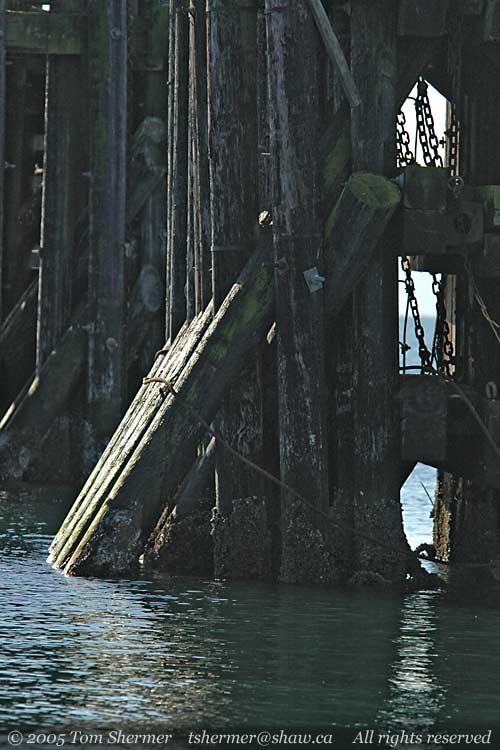 |
| At this
point, a Harbour Seal showed up. I had seen one a little earlier,
in the distance, on the far side of the berth; maybe this was the
same one. |
|
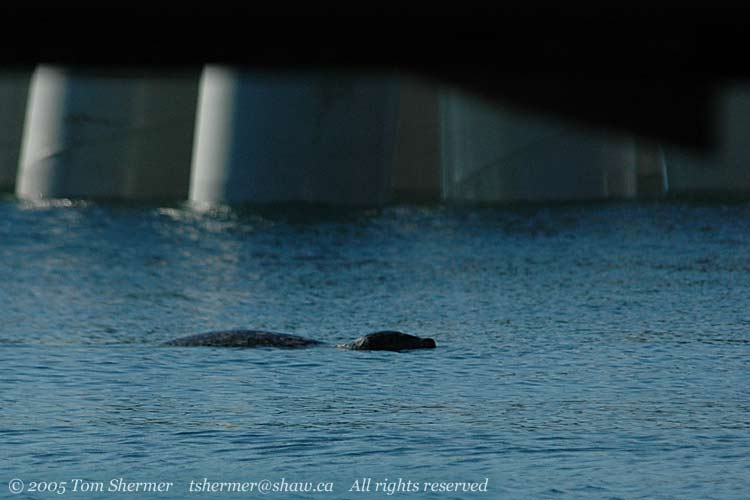 |
| Before getting
up from my little boulder, I took a few more photos of the turnstones.
Here I managed to find one that was in a good amount of light: not
the extreme sunlight (giving too much contrast) or the extreme shadow
(giving too little). |
|
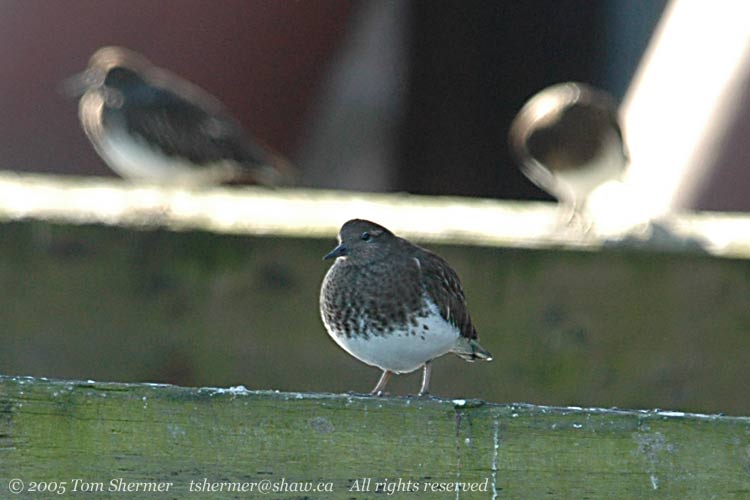 |
| I got up
and walked a little towards the mainland. There were a lot of grebes
and a few cormorants out on the water. I spotted a male Surf Scoter
and took him as my next subject. |
|
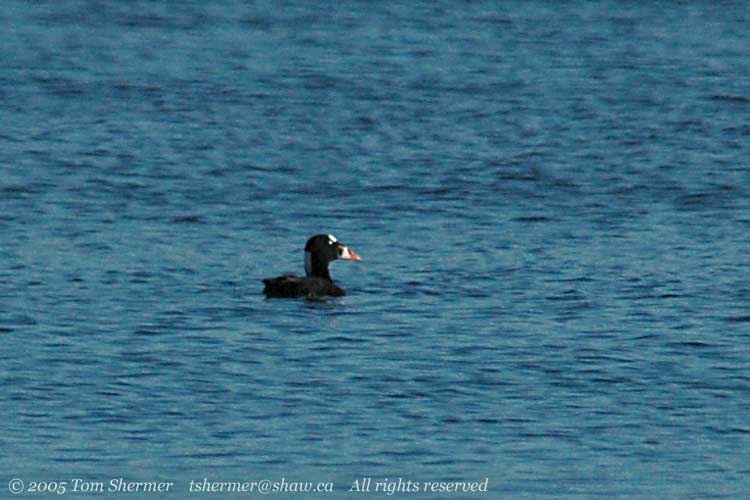 |
| I'm happy
I concentrated on this guy. As I was watching, he dove underwater.
I waited a little while for him to come up, and I was rewarded with
an incredible resurfacing. |
|
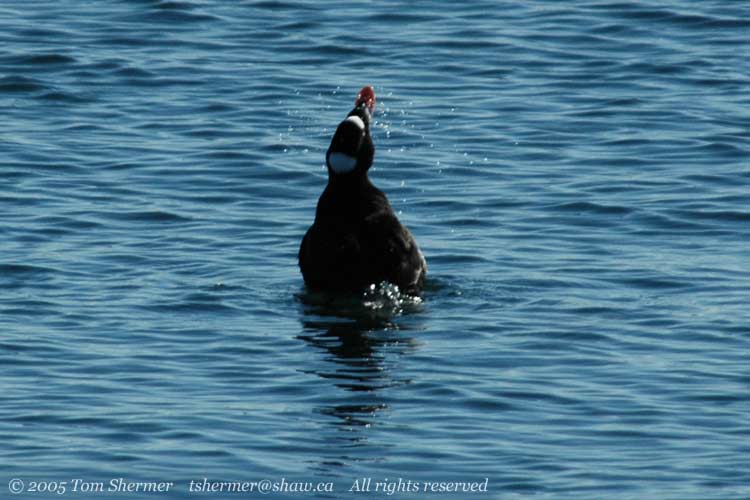 |
|
You know, I've seen
whales breach before, but I've never seen a duck breach.
That was pretty cool.
Maybe this duck was
just in a happy or playful mood, because a little later, I caught
him splashing some water around.
|
|
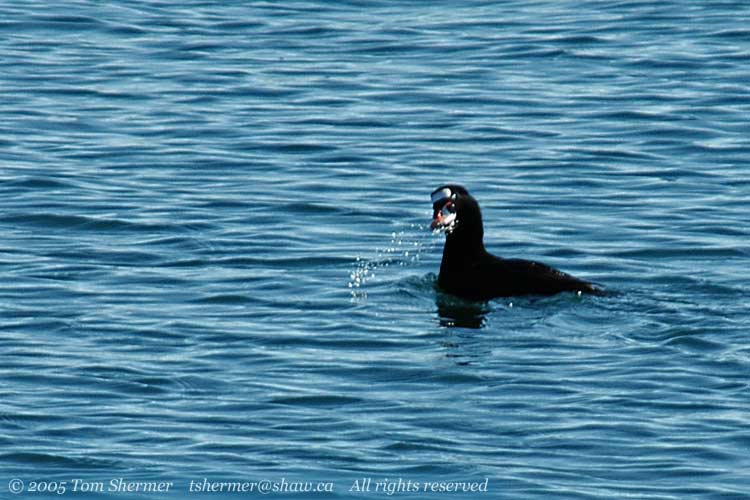 |
|
After shooting the
scoter a while more, I made one final scan around to see if I
could find that Rock Sandpiper. I didn't, unfortunately, and my
parking time was running out.
I went back to the
car and headed off to Beach Grove Park. I went to the woodsy part
of the park first. There were lots of Ruby-crowned Kinglets around,
and a few Hutton's Vireos. Here's a Ruby-crowned Kinglet, well-camouflaged.
|
|
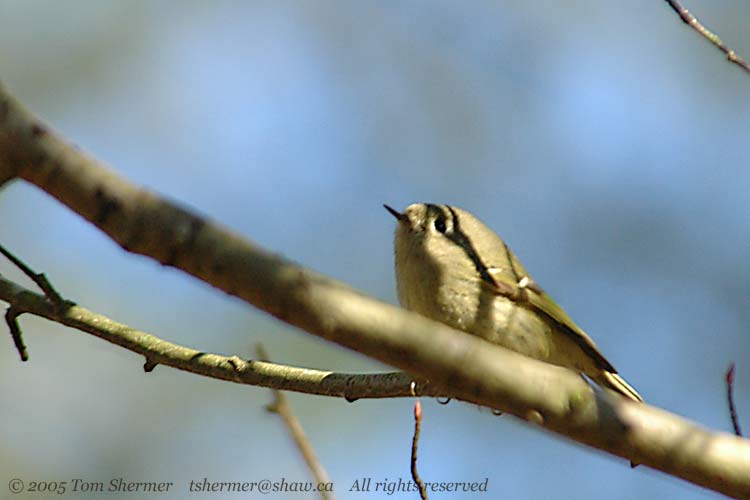 |
| And the
following photo shows a Hutton's Vireo. The kinglet and vireo often
look quite similar in the field, and the best field marks for telling
them apart are the bill size and the presence of a dark band behind
the second white wing-bar on the kinglet (but not the vireo). Once
you know to look for those things, they become easy to tell apart. |
|
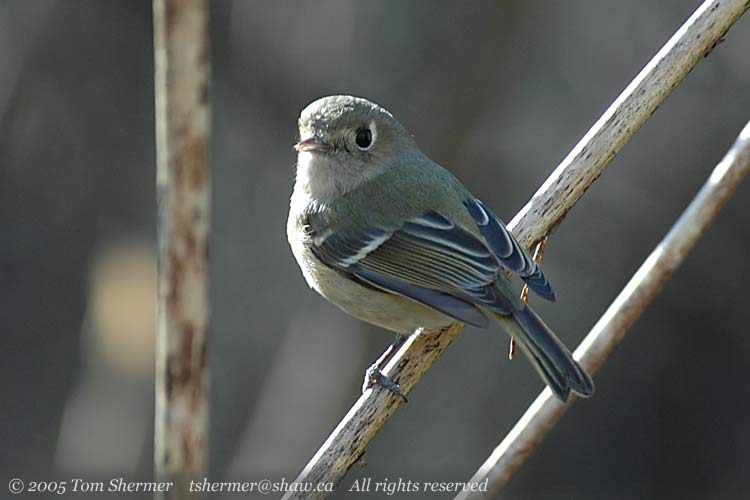 |
| While I
was roaming the woods, this Downy Woodpecker came by. I only got
three shots of him before he was gone. |
|
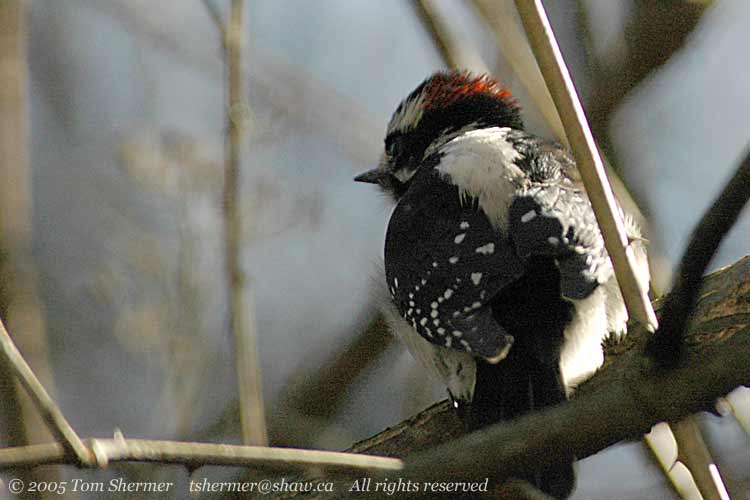 |
|
I roamed further around
the park, and came across some perched and some flying Bald Eagles,
but I'll spare you those. Then I spent some time trying to get
a photo of one of the resident Great Horned Owls; this didn't
work as it was well-placed within a tree and all that was showing
was part of its chest.
It was now almost noon,
so I found a place to have lunch in Tsawassen. It was barely passable;
if someone out there knows of any decent restaurants in Ladner
or Tsawassen, please tell me about them. I'm diabetic and
on a strict diet, so no pasta or pizza or sandwich places...
After lunch, I had
made no major plans, and started driving vaguely in the direction
of home. I was stopped at a traffic light where River Road meets
the highway and managed to get off a few shots of a gull before
the light changed. Sadly, like many gulls, I can't identify the
species. I've asked around, and it's a tough call. I'll leave
him unidentified.
|
|
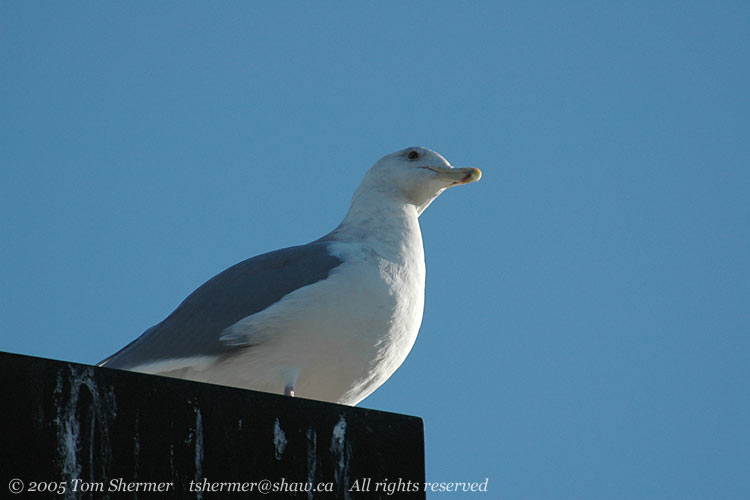 |
|
There's a park a little
ways further north on River Road that I had never been to before:
Deas Island Park. ("Deas" rhymes with "bees.")
Lacking anything else to do, I stopped there. It was a nice park
with some waterfront and nice paths, but I found very little bird
life there: a few eagles in trees, and some Common Mergansers
in a slough.
So I contented myself
with a few other shots. Here's one of a segmented grass of some
sort, maybe a bamboo. I've seen these plants in various places
around town, but never figured out what they are. They are quite
attractive, though, especially if you happen to like plants that
look like they are topped with burnt cigarettes.
|
|
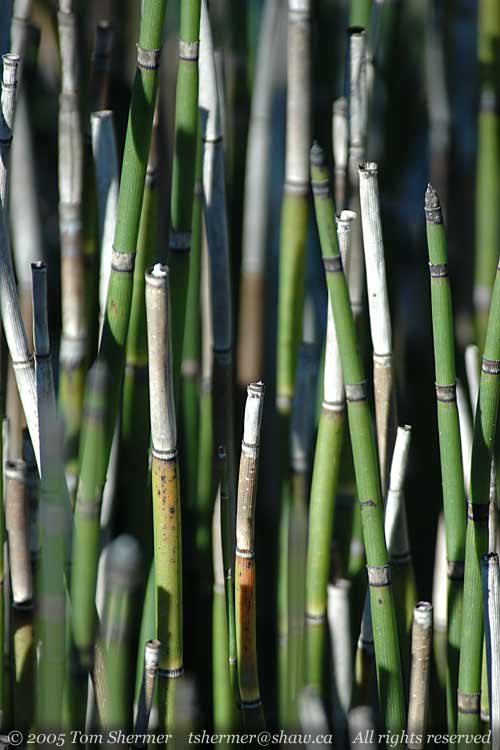 |
| Here's a
view of one of the paths at Deas. The slanted trees were pretty
interesting. |
|
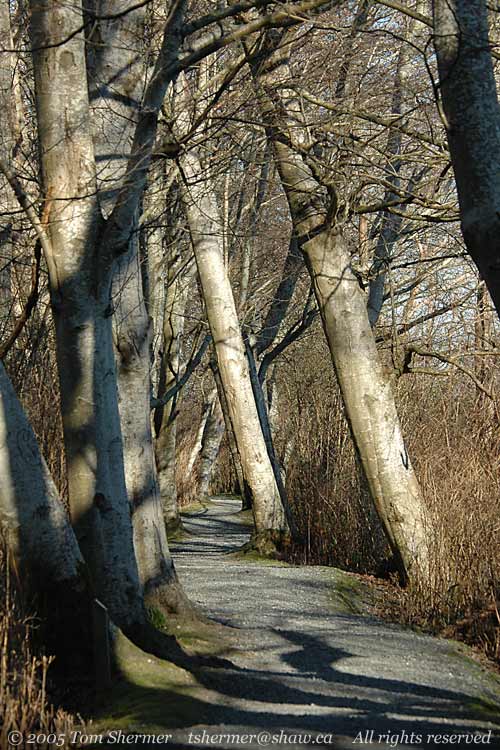 |
| It was now
3:30 and I had gotten tired, so I headed home. I stopped only when
I noticed a Red-tailed Hawk perched on a branch that overhangs River
Road. While I was shooting, he decided to take flight, which meant
launching pretty much directly towards me. Here he is, about to
leap. |
|
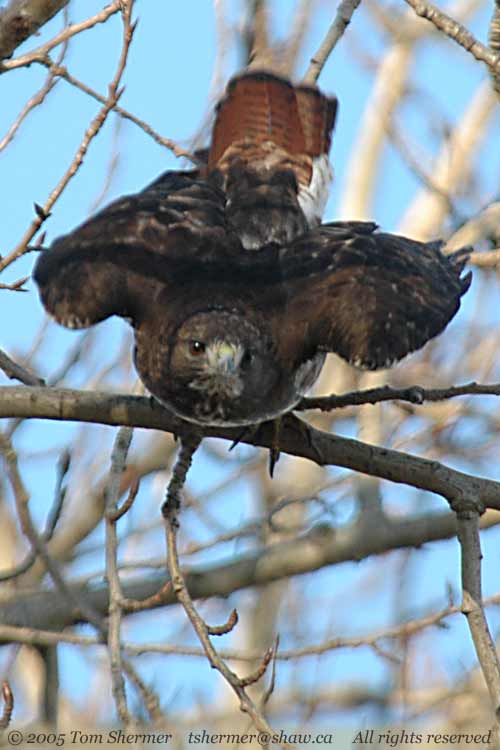 |
|
Next time, I'll visit
with a pale old friend down at the lake.
Always into something
fowl,
Tom
|
|
|